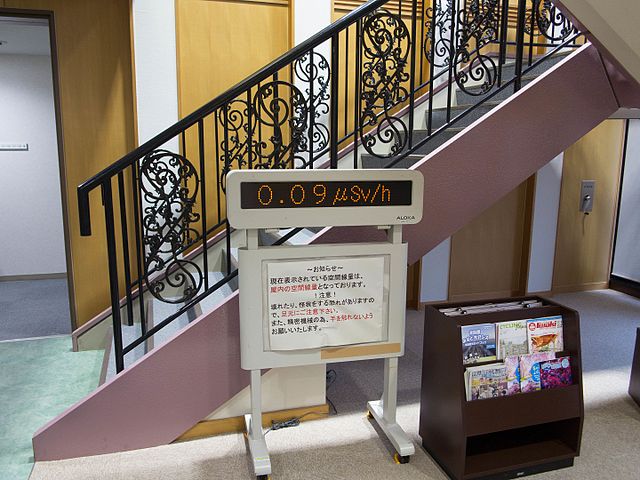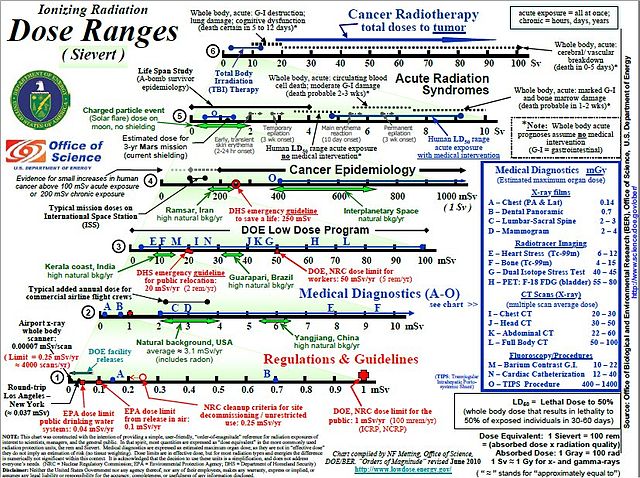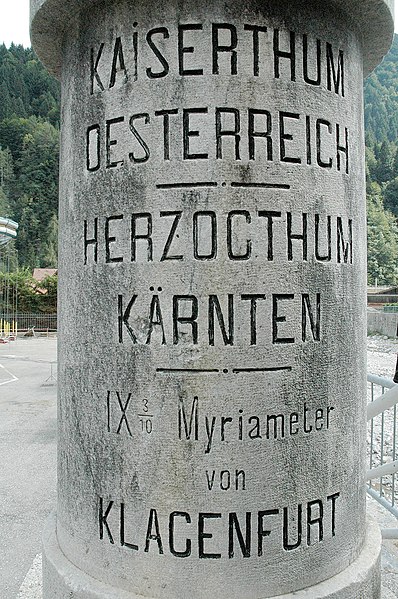The sievert is a unit in the International System of Units (SI) intended to represent the stochastic health risk of ionizing radiation, which is defined as the probability of causing radiation-induced cancer and genetic damage. The sievert is important in dosimetry and radiation protection. It is named after Rolf Maximilian Sievert, a Swedish medical physicist renowned for work on radiation dose measurement and research into the biological effects of radiation.
Display of background radiation in a hotel at Naraha, Japan, showing dose rate in microsieverts per hour, five years after the Fukushima disaster
US Department of Energy 2010 dose chart in sieverts for a variety of situations and applications
International System of Units
The International System of Units, internationally known by the abbreviation SI, is the modern form of the metric system and the world's most widely used system of measurement. Coordinated by the International Bureau of Weights and Measures it is the only system of measurement with an official status in nearly every country in the world, employed in science, technology, industry, and everyday commerce.
Silicon sphere for the Avogadro project used for measuring the Avogadro constant to a relative standard uncertainty of 2×10−8 or less, held by Achim Leistner
Stone marking the Austro-Hungarian/Italian border at Pontebba displaying myriametres, a unit of 10 km used in Central Europe in the 19th century (but since deprecated)
Closeup of the National Prototype Metre, serial number 27, allocated to the United States




